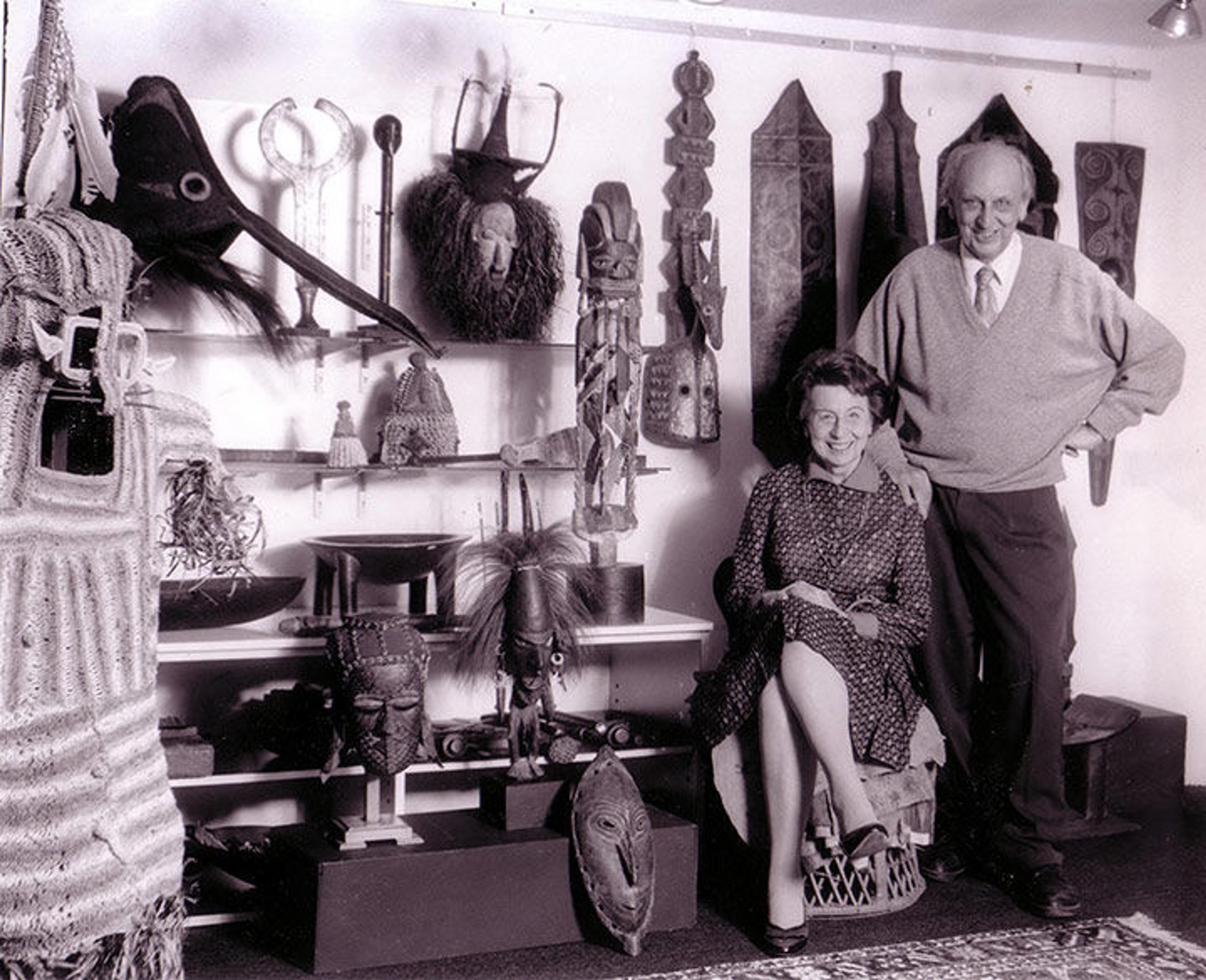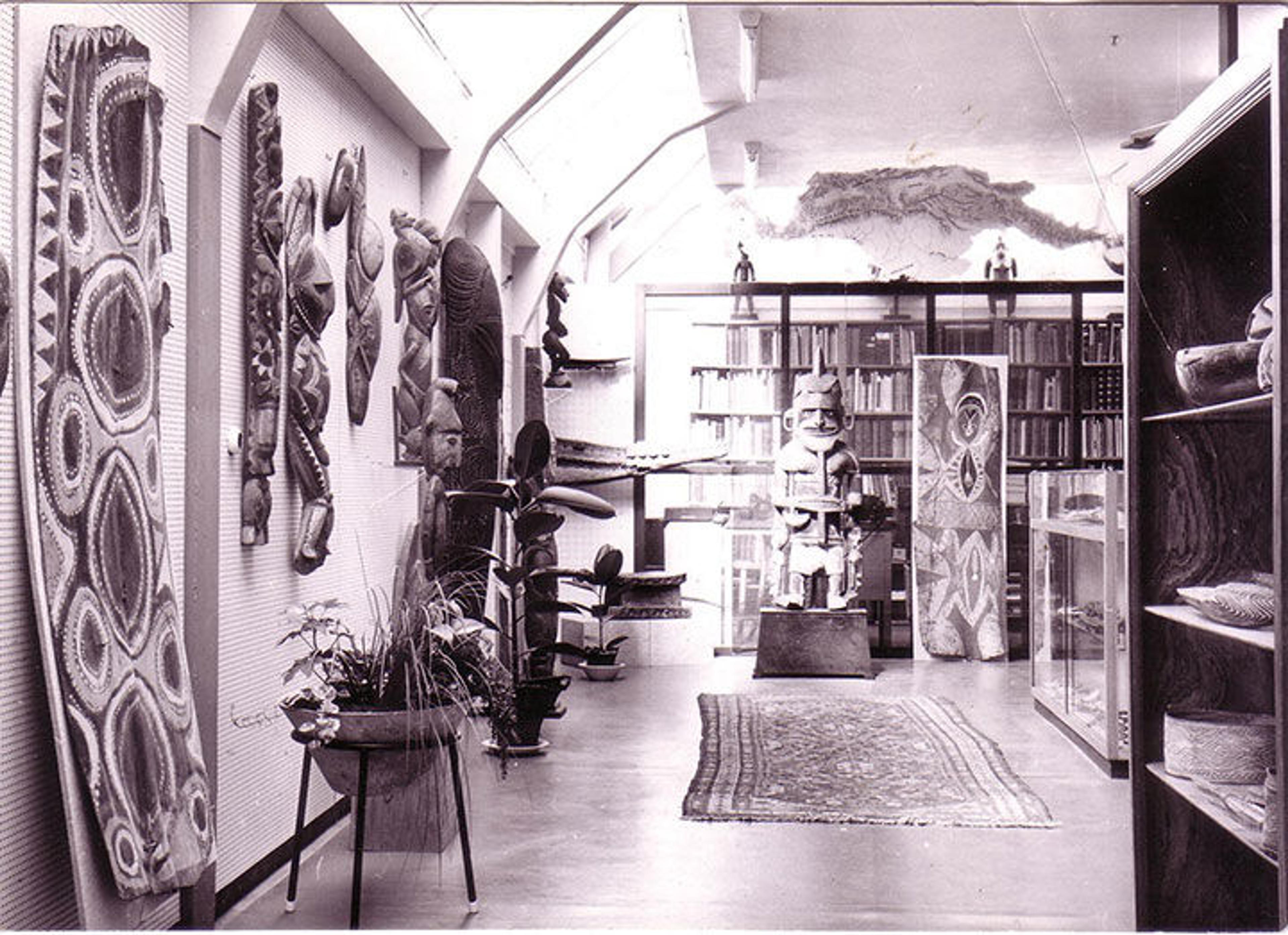
Therese Finette Lemaire and Matthias Lemaire, circa 1970s. All photos courtesy of Finette Lemaire
«Galerie Lemaire is an Amsterdam-based art gallery founded, in 1933, by Matthias "Louis" Lemaire. Since then, the gallery has been continually run by three generations of the family, with an inventory of art spanning Africa, Oceania, the Americas, and both Central and Southeast Asia. Between the 1950s and 1970s, the gallery became particularly active in acquiring Oceanic art, with the notable acquisition of the Sepik art collection of Dr. Lautenbach, which was sold to Volkenkunde Museum in Rotterdam. In addition to being a prominent multicultural-art gallery, over the years it has also served as a cultural hub that has hosted such notable Dutch literati and artists as Annie M.G. Schmidt; the architects Aldo Van Eyck, Eugène Brands, and Melle Oldeboerrigter; and the author, painter, and sculptor Jan Wolkers.»
Matthias's son, Louis Frederik (Frits) Lemaire, took over business operations and also ran a photo studio, Fotostudio Lemaire. Frits produced many of the photographs that now reside in this collection. The gallery has continued to remain at this location, and since 2000 has been owned and operated by Frits's daughter, Finette Lemaire.

Matthias Lemaire, circa 1950
In 2008, The Met's Department of the Arts of Africa, Oceania, and the Americas, Visual Resource Archive (AAOA-VRA) acquired the object-inventory photographs of Galerie Lemaire. In 2015, I had the opportunity to address the challenging question of how to process and make accessible the approximately 15,000 inventory photographs (loosely compiled silver gelatin prints with a small percentage of color photographs and transparencies) spanning over 40 years of international, non-Western art-dealing activity from the Dutch gallery. Because the rest of the business records still reside with the gallery, I needed to devise a "stand-alone" overall organizational structure for the photographs that also had discrete subsections, so that scholars and researchers could efficiently search within specific areas of the collection.

Galerie Lemaire, circa 1960s
Interestingly, I found structural inspiration close by, within the AAOA-VRA's largest and most comprehensive legacy visual-resource collection, the former Museum of Primitive Art (MPA) Image Library, currently known as the Photograph Study Collection. The core of this collection of object images was methodically assembled between the years 1957 and 1974 (with AAOA additions assembled through the early 1990s), by two pioneering non-Western art scholarship and information specialists: MPA Director Robert Goldwater, and MPA Library Director Allan D. Chapman. Their image classification was comprehensive yet eminently practical—hierarchical by object origin geography (continent, country, region), and then by object type (bowls, clothing, masks, statues, tools, weapons, etc.), and even further by cultural group.
In taking a cue from the pedagogical and organizational methodologies of Goldwater and Chapman, I implemented a very similar hierarchical, geographical, and object-type structure to the Galerie Lemaire records. With some revision to reflect current art-historical scholarship and geopolitical conditions (I dropped all British, Dutch, and French colonial designations in favor of Getty Thesaurus of Geographic Names), this model of arrangement has proven to work quite well given the broad geographic and cultural breadth of the objects depicted in the Galerie Lemaire inventory photographs. (Areas represented include Asia; Africa; North, Central, and South America; Oceania, with an emphasis on the former German New Guinea, now Papua New Guinea, and Papua Provence, now Indonesia.)
Galerie Lemaire records are now open for research by appointment in the AAOA Visual Resource Archive. You can view the finding aid online through the library's Digital Collections.